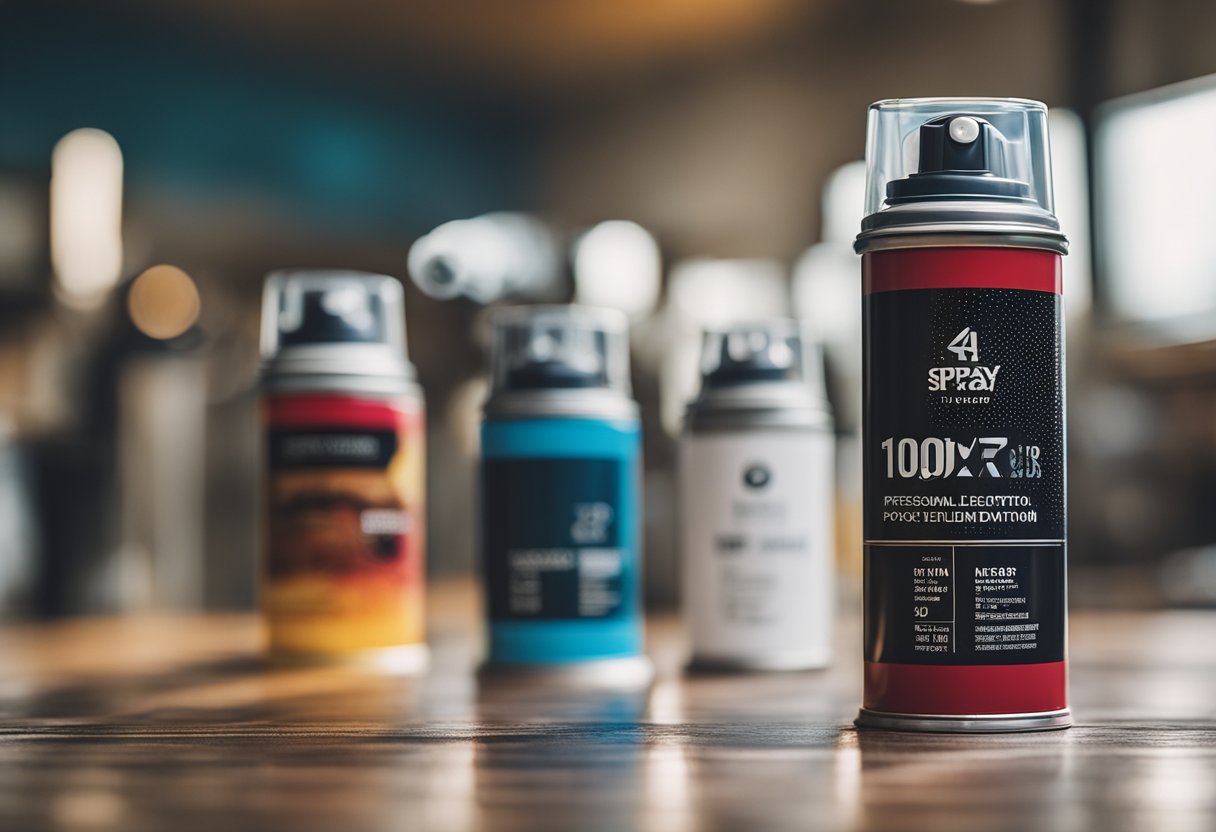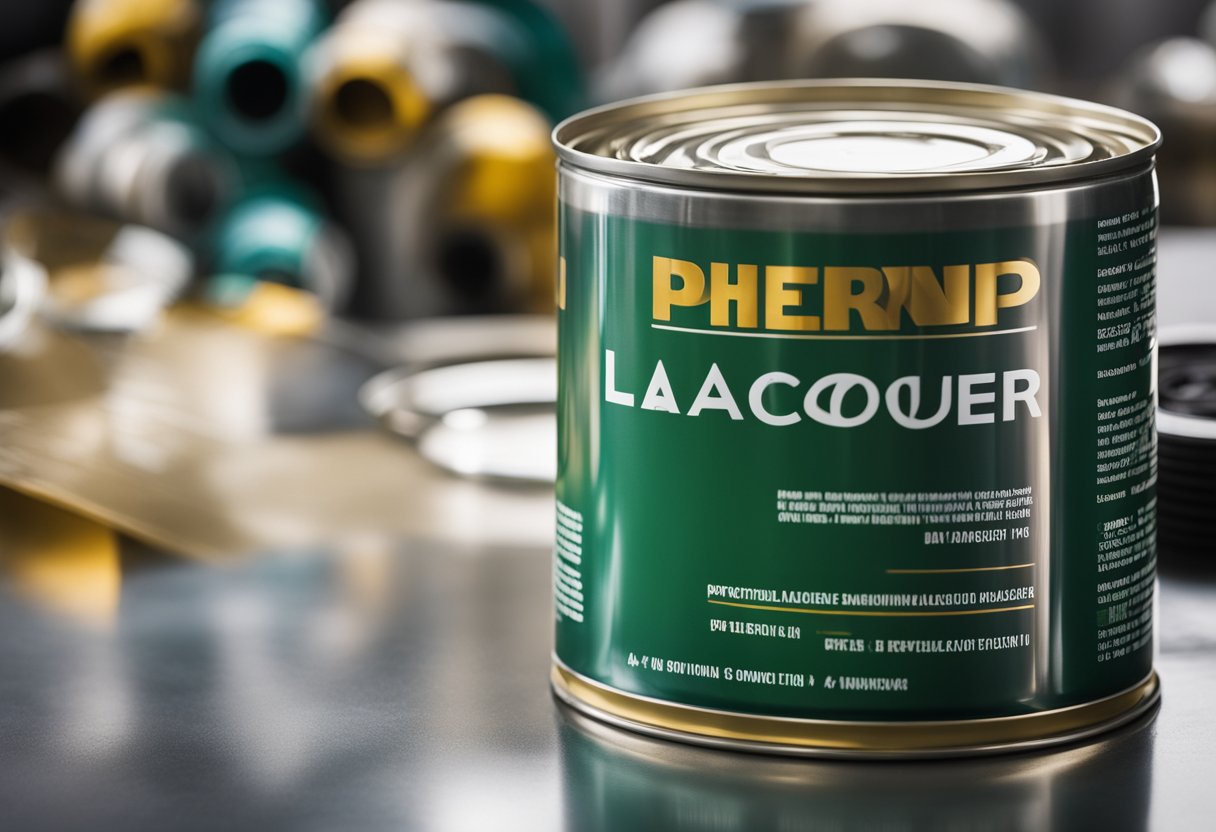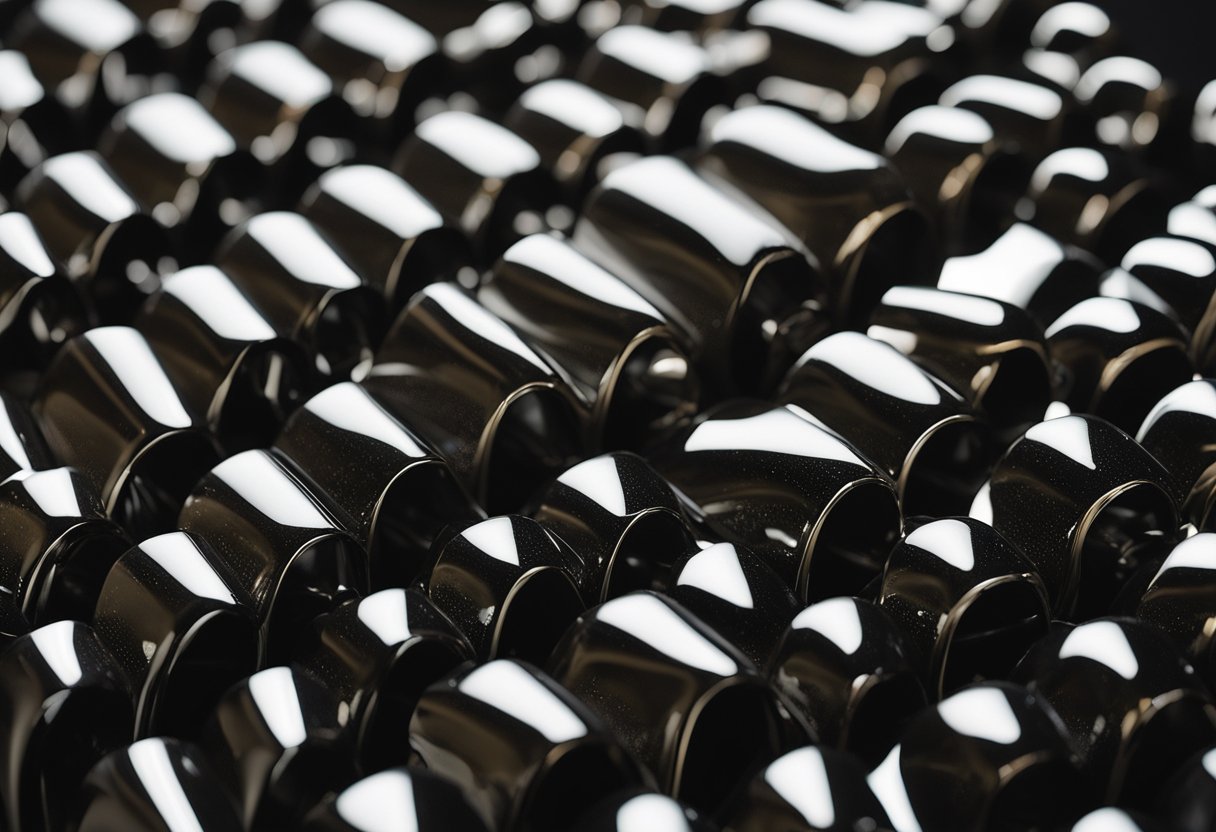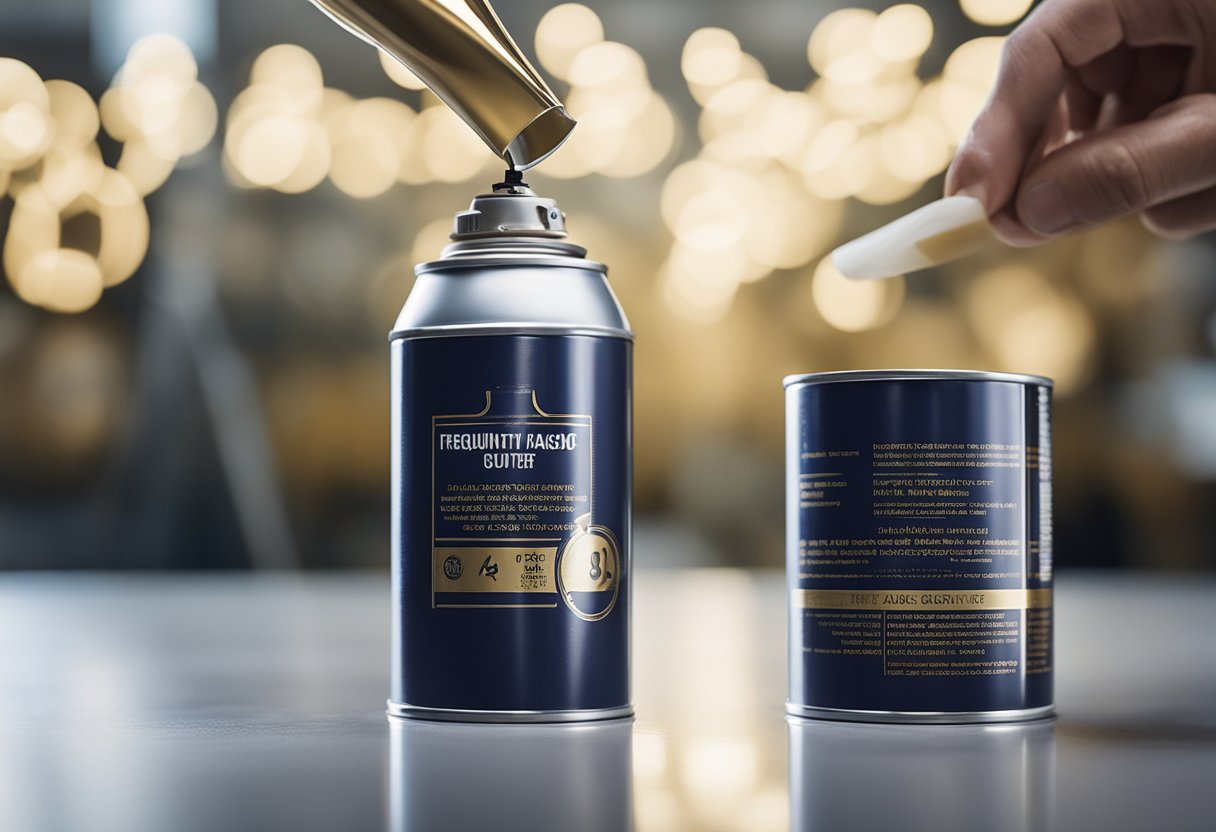Spray lacquer over paint is a popular technique used to give a glossy finish to surfaces. It is a simple way to enhance the appearance of furniture, cabinets, and other wooden surfaces. However, it is important to understand the process and prepare the surface properly before applying lacquer over paint to ensure a smooth and durable finish.
Lacquer is a clear or colored coating that is applied to protect and give a high gloss to painted surfaces. It is usually made with a little amount of paint thinner which would thin out the coat and expose the layer underneath. Applying lacquer over paint requires care and caution to avoid ruining the paint job that you put so much time and effort into. It is possible to put lacquer over paint, but you can’t use it on every type of paint. For instance, it has poor bonding qualities with oil-based paints.
Key Takeaways
- Proper preparation is key to achieving a smooth and durable finish when applying lacquer over paint.
- It is important to choose the right type of lacquer and prepare the surface properly before beginning the project.
- Lacquer is a clear or colored coating that is applied to protect and give a high gloss to painted surfaces.
Understanding Lacquer and Paint
https://www.youtube.com/watch?v=Y1IzbYsjHhM&embed=true
When it comes to painting, there are many different types of paint, each with their own unique properties and characteristics. One of the most popular types of paint is lacquer, which is known for its durability and glossy finish. Lacquer is typically applied to wood, metal, or even automotive surfaces.
Lacquer is a type of finish that is made by dissolving nitrocellulose or acrylic resin in a solvent. The solvent evaporates, leaving behind a hard, glossy finish. The finish is often used on furniture, musical instruments, and other decorative items.
Paint, on the other hand, is a mixture of pigments, binders, and solvents that is used to add color and protection to a surface. There are many different types of paint, including oil-based paint, water-based paint, acrylic paint, and latex paint.
Oil-based paint is made with a solvent that is derived from petroleum. It is known for its durability and resistance to chipping and fading. Water-based paint, on the other hand, is made with a water-based solvent. It is known for its ease of use and low odor.
Acrylic paint is made with an acrylic polymer binder and a water-based solvent. It is known for its fast drying time and resistance to fading. Latex paint is a type of water-based paint that is made with a latex binder. It is known for its durability and resistance to cracking and peeling.
When it comes to applying lacquer over paint, it is important to choose the right type of lacquer for the job. Acrylic lacquer is a good choice for most types of paint, including water-based and acrylic paints. Chalk paint, enamel, and cellulose paint, on the other hand, may require a different type of lacquer.
It is also important to choose the right type of finish for the job. Different finishes, such as matte, satin, and gloss, can affect the final appearance of the project. When applying lacquer over paint, it is important to choose a finish that is compatible with both the paint and the lacquer.
Overall, understanding the properties of lacquer and paint is essential when it comes to achieving a high-quality finish. By choosing the right type of lacquer and finish for the job, you can ensure that your project looks great and lasts for years to come.
Preparation Before Applying
Before spraying lacquer over paint, it’s essential to prepare the surface properly. Proper preparation ensures that the lacquer adheres correctly, and the finish is smooth and even. Here are the steps I follow to prepare the surface before applying lacquer:
-
Clean the surface: The surface should be clean, dry, and free of any dirt or debris. Use a clean cloth to wipe the surface and remove any dust particles.
-
Sand the surface: Sand the surface with fine-grit sandpaper to create a rough surface that the lacquer can adhere to. Sanding also helps to remove any imperfections on the painted surface.
-
Prime the surface: Apply a coat of primer to the surface to ensure that the lacquer adheres correctly. The primer should be compatible with both the paint and the lacquer. Allow the primer to dry completely before applying the lacquer.
-
Test the lacquer on a small area: Before applying the lacquer to the entire surface, it’s essential to test it on a small area. This will help you determine if the lacquer is compatible with the paint and if there are any issues with the application.
-
Apply the lacquer in thin coats: Apply the lacquer in thin coats to avoid drips and runs. Allow each coat to dry completely before applying the next coat.
By following these steps, you can ensure that the surface is properly prepared, and the lacquer adheres correctly. Proper preparation is essential for a smooth and even finish.
The Process of Applying Spray Lacquer Over Paint
https://www.youtube.com/watch?v=sLm7tVMUowM&embed=true
When it comes to applying spray lacquer over paint, there are a few important steps to follow. First, it is crucial to ensure that the surface is clean and free of any grease or wax. A smooth base for the lacquer can be created by lightly sanding the surface with fine-grit sandpaper.
Next, it is important to choose the right type of spray lacquer for the job. Water-based, acrylic, and gloss paint can all be lacquered over, but it is important to identify what type of paint will be lacquered over to avoid any potential problems.
When spraying the lacquer, it is important to follow the instructions carefully. The paint sprayer should be held at a distance of approximately 6-8 inches from the surface, and the lacquer should be applied in even strokes. It is recommended to apply light, thin coats of lacquer to avoid drips and ensure an even finish.
After each coat of lacquer is applied, it is important to wait for it to dry before applying another coat. Depending on the type of lacquer used, it may take around 30 minutes to dry and up to 48 hours to cure completely.
By following these simple steps, it is possible to achieve a smooth and durable finish when applying spray lacquer over paint.
Important Factors to Consider
https://www.youtube.com/watch?v=eAxFFMwS754&embed=true
When considering spraying lacquer over paint, there are several important factors to keep in mind. These factors can affect the overall quality and durability of the finished product.
Temperature and Drying Time
Temperature and drying time are important factors to consider when spraying lacquer over paint. It is important to ensure that the temperature is within the recommended range for the lacquer being used. Additionally, it is important to allow the paint to dry completely before applying the lacquer. Failure to do so can result in a poor finish and reduced durability.
Mixing and Thinning
Mixing and thinning the lacquer is also an important factor to consider. It is important to follow the manufacturer’s instructions for mixing and thinning the lacquer. Using too much or too little thinner can result in a poor finish and reduced durability.
Lacquer Thinner
It is important to use the correct type of thinner when spraying lacquer over paint. Using the wrong type of thinner can result in a poor finish and reduced durability. Lacquer thinner is typically used for spraying lacquer over paint. Other types of thinners, such as water or oil-based thinners, may not be compatible with the lacquer and can cause the paint to dissolve.
Speed and Technique
The speed and technique used when spraying the lacquer over the paint can also affect the overall quality and durability of the finished product. It is important to maintain a consistent speed and distance from the surface being sprayed. Additionally, it is important to use a technique that results in an even coat of lacquer.
Overall, there are several important factors to consider when spraying lacquer over paint. By taking these factors into account, you can ensure that the finished product is of the highest quality and durability.
Types of Finishes and Coats
https://www.youtube.com/watch?v=Rc9GBLB-kWM&embed=true
When it comes to finishing your woodwork, there are various types of finishes and coats you can use. Each of these finishes has its own unique properties, which makes them suitable for different applications.
Varnish
Varnish is a popular finish that is known for its durability and water resistance. It is available in both oil-based and water-based formulations. Oil-based varnishes take longer to dry, but they are more durable and provide better protection. Water-based varnishes dry quickly, but they are not as durable as oil-based varnishes.
Stain
Stain is a type of finish that is used to enhance the natural color of wood. It is available in a wide range of colors, from light to dark. Stains are available in both oil-based and water-based formulations. Oil-based stains penetrate the wood more deeply, which makes them more durable. Water-based stains dry quickly and are easy to clean up.
Shellac
Shellac is a natural finish that is made from the secretions of the lac beetle. It is available in both clear and amber formulations. Shellac is easy to apply and dries quickly. It is also easy to repair if it gets damaged. However, shellac is not as durable as other finishes, and it is not water-resistant.
Lacquer
Lacquer is a type of finish that is known for its durability and high-gloss finish. It is available in both clear and colored formulations. Lacquer is available in both nitrocellulose and acrylic formulations. Nitrocellulose lacquer is more durable, but it is also more toxic and flammable. Acrylic lacquer is less toxic and flammable, but it is not as durable as nitrocellulose lacquer.
Urethane
Urethane is a synthetic finish that is known for its durability and water resistance. It is available in both oil-based and water-based formulations. Oil-based urethane is more durable, but it takes longer to dry. Water-based urethane dries quickly, but it is not as durable as oil-based urethane.
Wax
Wax is a type of finish that is used to provide a soft, low-sheen finish. It is available in both clear and colored formulations. Wax is easy to apply and provides a natural look. However, wax is not as durable as other finishes, and it is not water-resistant.
Topcoat
A topcoat is a type of finish that is applied over another finish to provide additional protection. It is available in both clear and colored formulations. A topcoat can be used to provide a glossy finish, a matte finish, or a satin finish.
In conclusion, choosing the right finish for your woodwork depends on the type of wood, the desired sheen, and the level of protection you need. Each finish has its own unique properties, which makes it suitable for different applications.
Caring for Lacquered Surfaces
As someone who has experience with spray lacquer over paint, I know that it requires care and caution to maintain the durability of the finish. While lacquer provides a durable finish, it is not indestructible and requires proper care to prevent wear and tear.
One of the main concerns with lacquered surfaces is scratches and cracks. While lacquer provides protection against scratches, it is not completely scratch-resistant. To prevent scratches, it is important to avoid dragging heavy objects across the surface and to use coasters or placemats to prevent scratches from glasses and other objects.
In addition to preventing scratches, it is important to protect lacquered surfaces from excessive heat and moisture. Direct sunlight can cause the finish to fade, while excessive moisture can cause the lacquer to crack and peel. To prevent damage, it is important to keep lacquered surfaces away from heat sources and to wipe up any spills immediately.
Regular cleaning is also important for maintaining the durability of lacquered surfaces. To clean lacquered surfaces, it is best to use a soft, damp cloth and mild soap. Avoid using harsh chemicals or abrasive cleaners, as these can damage the finish.
Overall, caring for lacquered surfaces requires a combination of preventative measures and regular cleaning. With proper care, a lacquered finish can provide a durable and long-lasting finish that will protect your furniture for years to come.
Potential Challenges and Solutions
https://www.youtube.com/watch?v=2Hf-vMxbqDM&embed=true
Spraying lacquer over paint can be a challenging task, but with the right techniques, it can be done successfully. Here are some potential challenges that you might face when spraying lacquer over paint and their solutions:
-
Dust and debris: Dust and debris can easily get trapped in the lacquer finish, resulting in an uneven and bumpy surface. To prevent this, make sure to clean the surface thoroughly before spraying. Use a tack cloth to remove any dust and debris from the surface.
-
Wrinkles and blisters: Lacquer thinner can cause wrinkles and blisters when sprayed over an old coat of paint or finish. To avoid this, sand the surface lightly before spraying and make sure to use a compatible primer or sealer.
-
Lap marks and texture: Lap marks and texture can occur when the lacquer is applied too thickly or unevenly. To avoid this, make sure to spray the lacquer in thin, even coats. Use a fan or flexible spray tip to ensure even coverage.
-
Flammable and toxic: Lacquer is highly flammable and toxic, so it is important to use proper ventilation and safety equipment when spraying. Always wear a mask and eye protection, and make sure to spray in a well-ventilated area.
-
Coatings and metal: Lacquer can react with certain coatings and metals, causing discoloration or other damage. Always test the lacquer on a small, inconspicuous area before spraying the entire surface.
-
Professional help: If you are unsure about spraying lacquer over paint, it is always best to seek the help of a professional. They can offer expert advice and ensure that the job is done safely and correctly.
Overall, spraying lacquer over paint can be a challenging task, but with the right techniques and precautions, it can be done successfully.
Frequently Asked Questions
What is the best type of lacquer paint to use on furniture?
When it comes to lacquer paint, there are a variety of options to choose from. Nitrocellulose lacquer is a popular choice for furniture because it dries quickly and provides a hard, durable finish. However, it is important to note that nitrocellulose lacquer is flammable and requires proper ventilation during application. Water-based lacquer is another option that is safer to use and provides similar results.
Can spray lacquer be applied over stained wood?
Yes, spray lacquer can be applied over stained wood. However, it is important to ensure that the stain is completely dry before applying the lacquer. Additionally, it is recommended to lightly sand the stained surface before applying the lacquer to ensure proper adhesion.
Is it possible to apply lacquer over water-based paint?
Yes, it is possible to apply lacquer over water-based paint. However, it is important to note that water-based paint typically has a lower sheen than oil-based paint, so the final finish may not be as glossy as desired. It is also important to ensure that the water-based paint is completely dry before applying the lacquer.
Can you use lacquer to seal painted wood?
Yes, lacquer can be used to seal painted wood. In fact, lacquer is often used as a topcoat over painted surfaces to provide a protective layer and enhance the sheen of the finish. However, it is important to note that lacquer is not as durable as other sealants, such as polyurethane, and may not provide as much protection over time.
Is it safe to spray lacquer over enamel paint?
Yes, it is safe to spray lacquer over enamel paint. However, it is important to ensure that the enamel paint is completely dry before applying the lacquer. Additionally, it is recommended to lightly sand the enamel surface before applying the lacquer to ensure proper adhesion.
Can lacquer be used as a topcoat over gloss paint?
Yes, lacquer can be used as a topcoat over gloss paint. In fact, lacquer is often used as a topcoat over painted surfaces to provide a protective layer and enhance the sheen of the finish. However, it is important to note that lacquer is not as durable as other topcoats, such as polyurethane, and may not provide as much protection over time.

Hi, I’m Sal Muller of Tooltrip.com. My DIY experience led me to understand essential power tools for home projects. Tooltrip.com guides enthusiasts and professionals in choosing right tools for any job. I provide concise top tool reviews for easier, efficient DIY.





